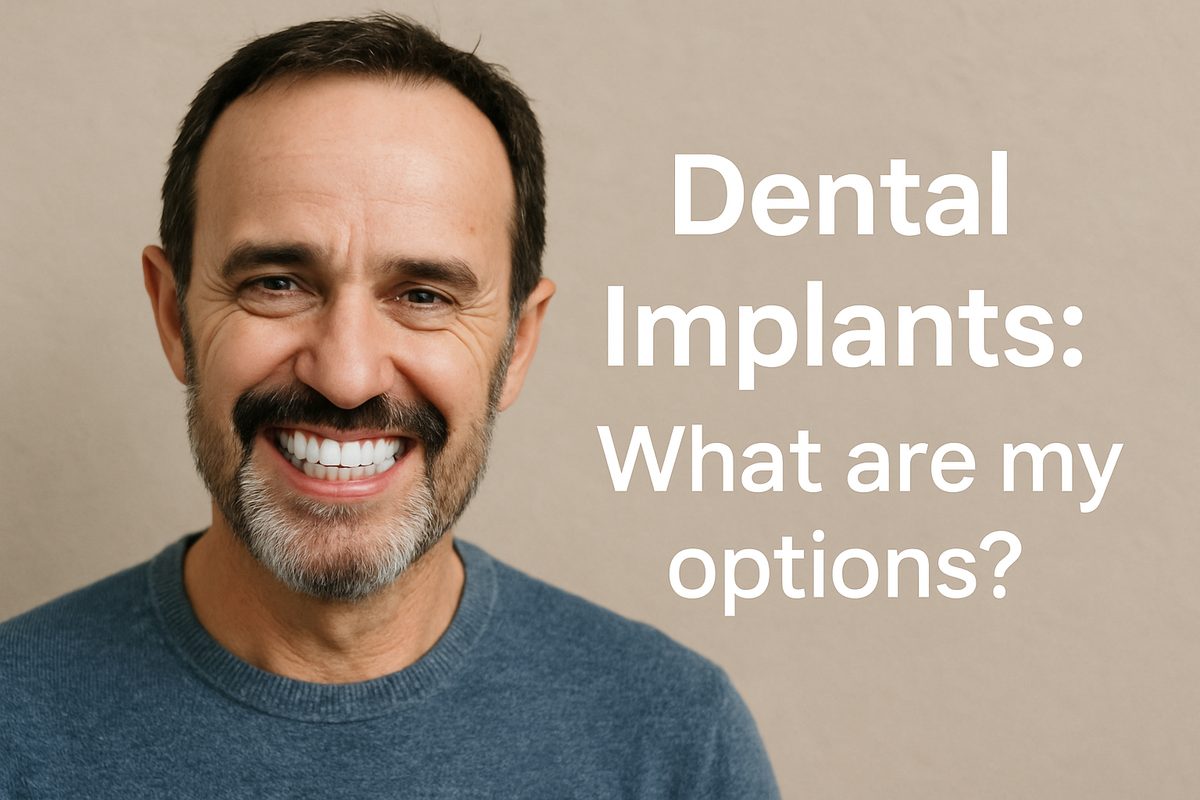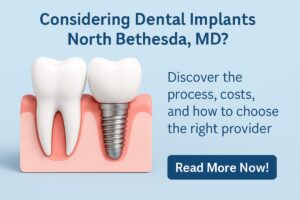If you’ve ever asked “what implant” is right for you, this post will answer that clearly. We’ll explain common implant types, how dentists decide which implant fits your needs, a typical treatment timeline, cost factors, and how to pick a provider. By the end you should feel ready to ask focused questions at your consult and know which options match your goals for function, looks, time, and budget.
Common Dental Implant Options
Single-tooth implant
A single-tooth implant replaces one missing tooth with a titanium post and a crown. It looks and feels like a natural tooth and helps preserve jawbone. Pros: excellent function and long-term bone support. Cons: higher up-front cost than a traditional bridge. Good candidates have healthy gums, enough jawbone, and no uncontrolled medical issues like severe diabetes.
Implant-supported bridge
When several adjacent teeth are missing, an implant-supported bridge uses two or more implants to hold a fixed bridge. It avoids grinding down healthy teeth like a traditional bridge. Benefits include better bite strength and easier hygiene under the bridge. Placement is similar to single implants but planned to support multiple crowns.
All‑on‑4 / full‑arch implants
All-on-4 and similar full-arch solutions replace an entire upper or lower set of teeth using just four to six implants supporting a fixed arch. This is ideal for people with many failing teeth or full-mouth tooth loss who want faster rehab and a fixed, non-removable solution. Recovery often involves a short healing period with temporary teeth followed by final restorations.
Mini implants and overdentures
Mini implants are smaller posts used mainly to stabilize removable dentures (overdentures). They’re less invasive and lower cost but may not work for full fixed restorations. Good for patients seeking improved denture stability with quicker healing. Downsides: may not last as long as standard implants for heavy chewing forces.
How Dentists Decide What Implant Fits You
To answer “what implant” fits someone, dentists review medical and dental history, perform digital X-rays and 3D scans, and use periodontal assessments to check gum health and bone volume. They may screen for sleep apnea or airway issues if relevant. Key medical factors: smoking, diabetes control, prior extractions, extent of bone loss, and patient goals like budget, timing, and cosmetic needs.
Procedure, Sedation, and Recovery
Typical flow: plan with 3D imaging, possible bone graft if bone is low, implant placement, a healing period of weeks to months, and then final crowns or bridges. Minimally invasive tools reduce cutting and stitches for faster recovery. Sedation options include oral sedation and nitrous oxide to ease anxiety. Most people resume normal activities in a few days; full integration takes longer.
Cost, Longevity, and Aftercare
Cost drivers include number of implants, need for grafts, and type of final restoration (single crown vs full-arch). Implants commonly last decades with good care. Daily brushing, flossing, and regular dental visits are essential. Watch for persistent pain, swelling, or loose implants—these need prompt attention.
Choosing the Right Provider
Experience matters, especially for complex cases. Dr. Kavish Gurjar trained at NYU College of Dentistry (periodontal honors program), is a Fellow of the International Congress of Implantologists, and is a member of the American Academy of Implant Dentistry. His work has been featured in Forbes, MSNBC Magazine, and Dentistry Today. State of the Art Dental Group in Rockville, MD uses digital X-rays, minimally invasive equipment, sedation systems, digital periodontal assessment, and sleep-apnea screening to improve planning and outcomes.
Next Steps — Is Now the Right Time?
If you’re ready to learn “what implant” fits your needs, schedule a personalized consult. The practice offers sedation choices and a dental concierge to make scheduling easy. A short evaluation with digital imaging will give you a clear plan, timeline, and cost estimate.




